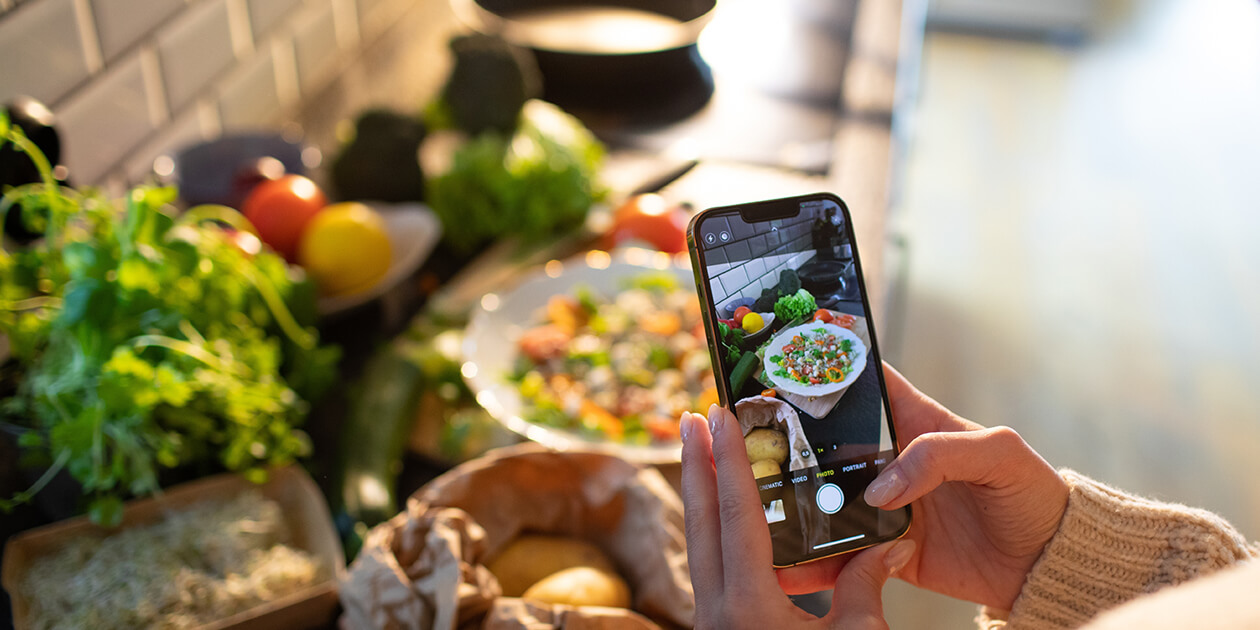Among Older Adults With Multiple Chronic Conditions, Photo Sharing Improved Patient-Clinician Communication on Dietary Behaviors

Many older adults have multiple chronic conditions (MCCs)—defined as having more than two concurrent chronic conditions—that are sensitive to dietary practices. However, communication around dietary behaviors can be challenging and complex because patients with MCCs have different dietary preferences. In addition, many clinicians lack effective communication tools or the training required to elicit dietary information from older patients.
Photo sharing involves patients taking health-related photos and sharing them with their clinicians. Photo sharing has been proven to be helpful in the clinical diagnosis process, but until now, it has not been used as a mode of patient-clinician communication. In the current study, researchers conducted a pilot intervention to determine the feasibility and acceptability of using photo sharing to communicate dietary behaviors between 14 older adult patients with MCCs, aged 60 plus years, and their clinicians at an academic primary care practice in San Francisco, California.
Clinician participants completed a survey on their socio-demographics and clinical work. Patient participants completed a survey on their socio-demographics and food security status, scheduled a visit with a clinician, and attended a 25-minute one-on-one photo-taking training. They were asked to take photos in response to the question, “What aspects of your everyday life affect what you eat and how much you have to eat?” They also received telephone/text message reminders every 3–4 days to take 1–2 photos/day over 7–10 days. Patient participants shared photos during the visit with their clinicians, which was audio-recorded. The researchers conducted separate semi-structured interviews with patient and clinician participants within 5 days of the visit.
Feasibility of the intervention was assessed by patient participants being able to take photos and share them during visits with their clinicians, number of photos taken, the amount of time required for photo sharing, and clinicians’ audio recording of the sessions. Acceptability was assessed by rating of participants’ willingness to use the intervention again and an analysis of interviews about participants’ views on using photos during medical appointments, as well as identified barriers and benefits of photo sharing.
Among patients and clinicians, photo sharing had high acceptability and feasibility.
Photo sharing:
- Enhanced patient-clinician communication as patients were able to share dietary practices easily and quickly and felt the photos captured the clinician’s attention, which contributed to active listening during discussions. Also, clinicians were able to see what their patients were eating instead of just listening to them describe their meals.
- Enabled patients to share new health-related information, such as how they accessed their foods, preparation styles, food choices, and how their personal cultures impacted dietary behaviors.
- Influenced clinician recommendations to patients about food selection, preparation, and portion size considering available resources and constraints.
- Strengthened patient-clinician connection through new insights about patients’ dietary behaviors.
The researchers concluded that, while effective management of MCCs depends on clear patient-clinician communication around dietary behaviors, photo sharing during in-person or video-based visits or in patient portal messages can promote better information exchange and enable patients to effectively communicate their lived experiences.
Citation
Jih, J., Nguyen, A., Woo, J., Tran, W-C., Wang, A., Gonzales, N., Fung, J., Callejas, J., Nguyen, T. T., & Ritchie, C. S. (2023). A photo-based communication intervention to promote diet-related discussions among older adults with multi-morbidity. Journal of the American Geriatrics Society, 71(2), 577-587. https://doi.org/10.1111/jgs.18145
Page published April 30, 2024
















